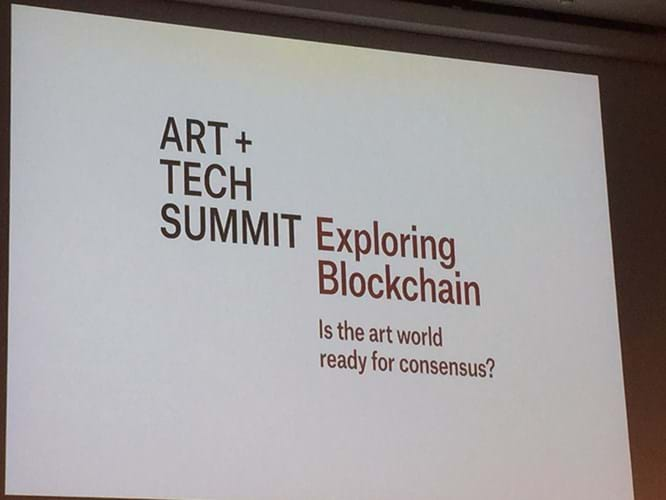Blockchain, effectively an online public ledger of data or transactions that is difficult to hack, forge or amend, could be used for art market transactions, tracking art and provenance verification.
But the technology might not be ready yet.
Jonathan Kewley, a lawyer at Clifford Chance, told delegates at the event taking place at Christie’s King Street premises: “I think blockchain will help the art market. Not a full facelift but maybe some subtle botox.”
He warned that there are many issues still to iron out such as data privacy, cyber security and competition law.
However, Nicolas Cary at Blockchain.com argued the case for the technology and said applications in the art world could include provenance tracking, digital fingerprinting of artwork and private transactions.
Jess Houlgrave co-founder of title registry Codex Protocol, said:” Blockchain is an enabler rather than a disrupter.”
She said blockchain can de-risk art buying by making provenance verifiable which will increase the size and value of the art market in the long run. “We won’t be talking about blockchain in 10 years. We will just be using it. Like how we use the internet now but we don’t need to talk about it.”
“Different Solutions”
The art world has so far only dipped its toe into the world of blockchain, largely via cryptocurrencies - virtual currencies such as Bitcoin that are used as secure payment options. Currently half a billion transactions are made a year in blockchain investments, but only 5% are in the art world.
However, Vanessa Grellet at US blockchain technology company ConsenSys highlighted the potential for the art market in terms of registering and tracking art: “There could be different solutions for different art. For instance, for digital art it can be tagged easily. New art as it is being made could also be tagged, physically. For existing art there are options such as visual imaging, codes or types of tagging.”

The use of blockchain technology in the art market was the key point of discussion at Christie’s Art + Tech Summit.
Many speakers at the Christie’s event warned companies to assess the risk that new technology can bring.
Anton Ruddenklau at KPMG said: “Be sanguine and critical. Go in with your eyes wide open. Yes, the technology is great, but always use your best commercial judgment. Blockchain is only part of a solution.”
He added: “It can allow bad actors into the system such as money launderers or terrorists. The system is not robust and not production ready.”
Richard Entrup, Christie’s global chief information officer, said: “We have to explore these technologies. Blockchain will become pervasive but it needs to become transparent first.”
But added: “The fact that blockchain is not GDPR (General Data Protection Regulation) compliant takes it off the table for a number of applications currently.”
But many of the speakers argued that in future there could be further opportunities for the art world.
Tech entrepreneur and investor Jordan Fried, at Hedera Hashgraph, predicted: “Better technology is coming. We are not there yet.”
Guillaume Cerutti, chief executive of Christie's wrapped up the summit with a teaser that the auction house is looking into how to use blockchain and will announce an update in due course.






